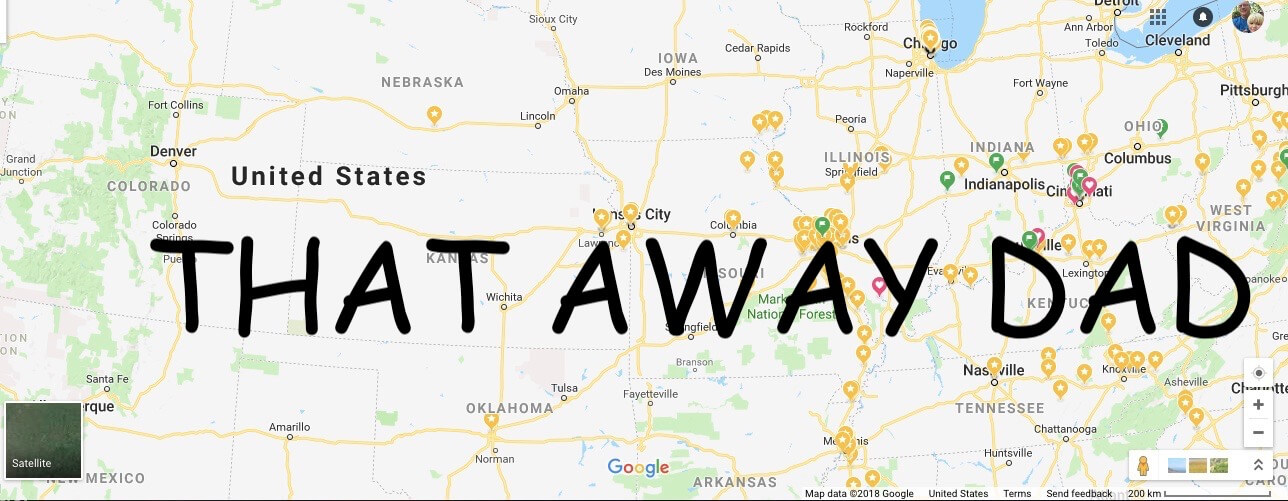Explore the remains of an ancient Native-American village at Millstone Bluff Archaeological Site in the Shawnee National Forest.
This forest-covered 320 feet hill sits just northwest of Illinois State Highway 145. The top of the mesa-like bluff is ringed by a broken sandstone escarpment. It is here Mississippian peoples (AD 1350-1550) who built homes, carved their religion into the stone, and buried their dead in stone box graves.

WHAT TO SEE
Stone Forts
The stone forts on Millstone Bluff predate the Mississippian culture living on the bluff and were made by the Late Woodland peoples from 600-900 AD. These forts were built by constructing a stone wall across the easiest access points to the bluff.
Prehistoric Households
Archaeologists have excavated portions of seven of the about 26 houses on the bluff.
The Mississippians lived in semi-subterranean houses with one half below ground and one half above ground.
Houses had rectangular basements below ground. Timber posts were inserted into the excavated “wall” trenches and branches woven between posts, like weaving a basket. Then finished with placement of wet clay and once dry insulated the house kept warm in winter and cool in summer.
Stone Box Cemetery
Another important part of Mississippian life was the preparation and interment of the dead. They designated a specific area on the bluff top as a cemetery where dead were placed in stone box graves.
Constructed with large stone slabs that formed a “box, the graves held the body and other important items, such as tools, pottery, and food the deceased might need in the afterlife.
Over the years, due to repeated vandalism and looting activity, all that remains are the empty stone box graves.

OUR TIME HERE
Starting Out
Millstone Bluff Archaeological Site is right off of Illinois Highway 147 on a short drive on a narrow gravel road to parking for the trailhead.

It is about a one-mile natural surface out and back hike with a loop on the bluff. It has close to 200 feet of elevation gain.
At the entrance, there are information boards on Native Americans who lived here.

Heading to the Bluff
The trail goes towards the right then begins the ascent to the bluff.

Reading this sign helps you imagine the stone fort that was once here.

We now faced a stairwell that leads up to the top to a loop to check out the ancient Native American village.

Ancient Cemetery
We walked to the right. Look for signboards along your way.

Then we stopped for a moment by the remains of the stone box cemetery. Graves were separated between families and each burial was treated differently depending on sex, age, or special skills or achievements.
Sadly, infants died at a higher rate back then and most individuals only lived into their 30’s with only a few surviving until their 50’s.

Petroglyph Site
To the right on the northwest side of the bluff is the petroglyph area. Here signboards describe what you will see in the rock walls below. It is hard to make out, but they do a good job explaining what the symbols mean.


Art includes a falcon-like bird, and an antlered serpent, human-like figures, crosses inside circles, and other motifs.

Village Area
Even though you can’t see the homes you can make out the impressions the houses left in the soil.

They surround the central plaza once used for cooking meat, children playing women grinding corn.

A larger indention in the ground was the community building for meetings with the political and religious leaders.

As you head to the south of the village area you can see off into the distance of the valley below. It makes sense why they chose this bluff with distant views of the surrounding countryside or an attacking tribe.

Final Thoughts
We headed back down the trail having learned a lot about Native Americans living in southern Illinois in the past.
I think this is one of the better-preserved sites I’ve seen since it includes village remains, a stone fort, petroglyphs, and a cemetery.
Although the Cahokia Mounds, which had been the largest city in North America before the Europeans came, is another amazing site near Collinsville, Illinois, that is also worth visiting.

DETAILS
Drive: Take Interstate 64 out of St. Louis and then turn south onto Interstate 57 in Mount Vernon. Then take Interstate 24 and look for Exit 7. Make a left onto Tunnel Hill Road which becomes Gilead Church Road after crossing Highway 45. At 147 make a left onto Highway 147 and look for the entrance sign for Millstone Bluff Archaeological Site on the left.
Hours: Sunrise to Sunset
Admission: Free
Address: Simpson, IL 62985
MORE NATIVE AMERICAN HIKES

Piney Creek Ravine
The largest area of Native American Rock art in Illinois is found at Piney Creek Ravine Nature Preserve.
This 198-acre nature preserve also has cascading waterfalls and colorful limestone cliffs.

Finding Petroglyphs at Washington State Park
Ancient Native American petroglyphs, a cave, and a historic stone overlook along Big River can all be enjoyed at Washington State Park about an hour south of St. Louis.

Kress Farm Garden Preserve: Waterfalls and Native American Caves
Kress Farm Garden Preserve has wet weather waterfalls and cliff caves and is only 40 minutes outside of St. Louis.


